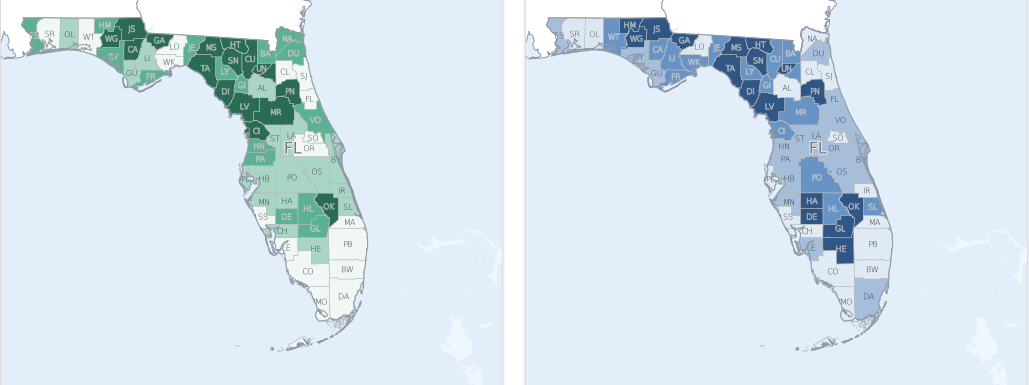
How healthy is your community? The Robert Wood Johnson Foundation and the University of Wisconsin today released rankings for the state health in every county in America.
The data finds St. Johns County the healthiest in Florida and Union County the least healthy. The study looks at such factors as premature deaths, healthy behaviors and environmental protections.
Florida health leaders say the data proves a connection between community wellness and the fitness of its residents.
“This year’s County Health Rankings data offers an opportunity to dig deeper into the connection between financial health and physical health, which are intrinsically linked,” states Dr. Roderick King, CEO of the Florida Institute for Health Innovation.
“Financial well-being is a key social determinant of health that must be addressed through cross-sector collaboration and by building new, innovative partnerships between the health and finance sectors to create systems that are more consumer-centric and outcomes-focused.”
The wealth and size of a community appear to affect its health. Florida’s five healthiest counties — St. Johns, Collier County, Martin, Seminole and Miami-Dade — all have significant populations and boast affluent communities.
That’s in comparison to Florida’s five least healthy counties — Union, Putnam, Dixie, Bradford and Gadsden — that are all rural.
Study authors stress the availability of suitable housing appears to have a direct relationship with residents’ health. Ability to afford a home shows a direct correlation to health outcomes.
“Our homes are inextricably tied to our health,” said Dr. Richard Besser, Robert Wood Johnson Foundation president and CEO.
“It’s unacceptable that so many individuals and families face barriers to health because of what they have to spend on housing. This leaves them with fewer dollars to keep their families healthy. Imagine the stress and pain that come with unplanned moves. We are all healthier and stronger together when everyone has access to safe and affordable housing, regardless of the color of their skin or how much money they make.”
The foundation released the data along with action plans and strategies for community leaders to address health disparities.
“All communities have the potential to be places where everyone enjoys full and equal opportunity. But the data show that’s not happening in most communities yet. Children of color face a greater likelihood of growing up in poverty, and low-income families struggle to pay rent and get enough to eat,” said Dr. Sheri Johnson, acting director of County Health Rankings & Roadmaps.
“It is time to do the difficult work of coming together to undo policies and practices that create barriers to opportunity. The Rankings can help communities ground these important conversations in data, evidence, guidance, and stories about challenges and success.”



